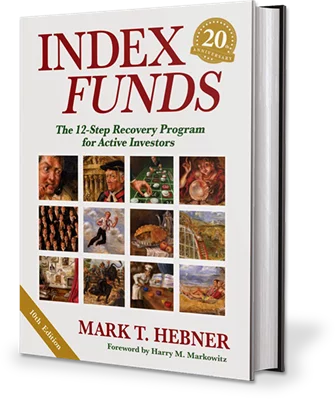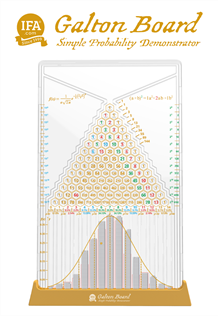America's smartest institutional investors are failing spectacularly. Research indicates that passive index fund strategies may have outperformed certain actively managed institutional funds, including those at prominent universities like Harvard and Yale. — a wake-up call for trustees and investors pursuing complexity.
America's charitable organizations collectively oversee more than $800 billion in endowment assets, yet most would achieve better results by simply buying index funds and dismissing their investment committees. This stark conclusion emerges from MIT research that analyzed nearly 40,000 nonprofit endowments over 13 years, revealing systematic underperformance that destroys billions in charitable wealth annually.
The scale of institutional failure documented by researchers Andrew Lo, Evgeny Matveyev, and Stefan Zeume should alarm trustees and individual investors alike who believe sophisticated investment management delivers superior returns. Their comprehensive analysis of 374,351 organizations reveals that endowment performance consistently lags simple passive benchmarks, with the worst-performing funds underperforming by two percentage points annually after fees.
The Scale of Institutional Failure
The MIT study exposes a troubling reality: organizations entrusted with preserving charitable wealth for future generations are systematically destroying value through misguided investment strategies. The average nonprofit endowment generated net investment returns of just 4.3% annually over the 13-year study period, while a conservative multi-asset benchmark delivered 6.7%.
This performance gap represents more than statistical noise — it constitutes a massive transfer of wealth from charitable missions to investment intermediaries. An equal-weighted portfolio of endowment funds underperformed the benchmark by approximately 20 percentage points cumulatively over the study period. (This comparison is based on hypothetical modeling and historical data, which may not reflect actual performance or current conditions.)
Even the largest, most sophisticated endowments — those exceeding $100 million in assets—barely managed to match simple passive strategies. These institutions, with access to prestigious investment managers, alternative investments, and dedicated professional staff, achieved average returns of just 4.73% annually. Meanwhile, the smallest endowments, managing less than $1 million, delivered anemic returns of 3.75%.
The implications extend far beyond nonprofit boardrooms. If institutions with fiduciary obligations, professional oversight, and substantial resources cannot consistently outperform basic index fund strategies, what does this suggest about the prospects for pension trustees, endowment committees, and individual investors pursuing complex, actively managed approaches?
The Complexity Trap: Why Sophistication Backfires
The pursuit of investment sophistication creates a predictable pattern of wealth destruction across America's nonprofit sector. Smaller endowments, seeking to emulate their larger counterparts, embrace strategies that consistently undermine their long-term objectives.
Particularly detrimental to return, the study finds, is individual security selection. Smaller endowments hold nearly one-sixth of their equity and fixed income portfolios in single-name securities, creating unnecessary concentration risk while adding approximately one percentage point of annual performance drag. This stock-picking approach reflects a fundamental misunderstanding of market efficiency and the challenges of consistently identifying undervalued securities.
Alternative investments present another seductive complexity trap. While large endowments may access genuinely superior alternative strategies through established relationships and substantial minimum investments, smaller funds often pursue diluted versions that deliver alternative-level fees without commensurate returns.
The relationship between fees and returns reveals this fundamental problem with pursuing sophistication. Recent research entitled "The risk, reward, and asset allocation of nonprofit endowment funds" demonstrates that fees are weakly positively correlated with gross returns but strongly negatively correlated with net returns.
The average endowment pays 65 basis points annually in investment management fees, with the 90th percentile paying 1.13% — fee levels that require substantial outperformance merely to match passive alternatives.
The Size Advantage: What Scale Really Buys
Larger endowments demonstrate superior performance, but not for reasons most individual investors might expect. Their advantage stems from operational efficiencies, better asset allocation discipline, and access to genuinely diversified vehicles rather than superior investment skill or market timing ability.
The asset allocation data reveals telling differences between large and small endowments. Small funds hold excessive cash positions averaging 20.2% of portfolios, compared to just 1.8% for large funds. Similarly, small endowments maintain 11.3% bond allocations while large funds allocate only 2.2% to fixed income. These conservative positions reflect liquidity concerns and risk aversion rather than strategic asset allocation decisions.
Professional management provides tangible benefits for larger endowments. Organizations using external advisors average $55 million in assets compared to $8 million for those managing funds internally. The external management model delivers superior risk-adjusted returns, with larger funds achieving relative Sharpe ratios of 0.943 compared to 0.491 for smaller funds.
Both individual investors and institutional trustees can capture many scale advantages without traditional institutional constraints. Modern low-cost index funds provide instant diversification across thousands of securities, professional management, and institutional-quality execution at expense ratios often below 0.1% annually. Unlike large endowments bound by committee processes and fiduciary concerns, smaller institutions and individuals can implement straightforward strategies without bureaucratic complications.
The size analysis also reveals an uncomfortable truth: sophistication often serves as expensive compensation for poor fundamental decisions. Large endowments achieve better results not through complex strategies but by avoiding the basic mistakes that plague smaller funds — excessive cash holdings, inadequate diversification, and high-cost active management.
Sector Insights: When Mission Conflicts With Returns
Organizational constraints significantly impact investment outcomes across different nonprofit sectors, revealing how institutional factors can override financial logic. The research identifies systematic patterns where mission-driven considerations trump return optimization, creating predictable performance drags.
Healthcare organizations, particularly hospitals, demonstrate this conflict most clearly. Despite substantial risk asset exposure and sophisticated investment approaches, hospital endowments significantly underperform other sectors. Their funding model volatility drives conservative positioning that sacrifices long-term returns for perceived stability.
The data shows that organizations relying on donations-based funding models allocate assets in a manner consistent with hedging parent organization operating risk rather than maximizing investment returns. A one standard deviation increase in funding risk correlates with an 11 percentage point decrease in public equity allocations, demonstrating how operational concerns distort investment decisions.
This mission-return conflict highlights crucial advantages that individual investors and smaller institutional funds possess over their larger counterparts. Personal portfolios and focused endowments need not accommodate extensive external stakeholders, complex regulatory constraints, or operational hedging requirements. These investors can focus purely on long-term wealth accumulation without the compromises that constrain larger institutional decision-making.
These mission constraints reveal how organizational structure affects outcomes, but governance quality proves even more decisive.
The Governance Factor: Leadership Matters More Than Expertise
Effective governance emerges as a more powerful determinant of investment success than sophisticated strategy or professional expertise. The research identifies several governance factors that consistently correlate with superior endowment performance, offering valuable insights for individual investors structuring their own decision-making processes.
Internal management versus external delegation represents the most significant governance decision. Organizations managing endowments internally earn significantly lower returns—40 basis points annually—compared to those utilizing external management. This performance gap reflects the challenges of developing in-house investment expertise while managing operational responsibilities.
The outsourced chief investment officer (OCIO) model delivers particularly strong results, outperforming both internal management and dedicated internal CIOs. This finding suggests that specialized, external expertise combined with streamlined governance structures creates optimal conditions for investment success.
Board independence correlates strongly with investment performance. Organizations with fewer independent directors tend to achieve lower returns, indicating that conflicts of interest and insular decision-making undermine investment outcomes. Excessive spending on non-core activities also correlates with poor endowment performance, suggesting that operational discipline extends to investment management effectiveness.
For trustees and individual investors alike, these governance insights translate into practical portfolio management principles. Successful investing requires disciplined processes, clear objectives, and systematic approaches rather than complex strategies or market predictions. The endowment evidence suggests that good governance matters more than investment sophistication.
The sector analysis also reveals how governance structures affect investment outcomes. Religious organizations often outperform educational institutions despite smaller average size, suggesting that simplified governance and clearer investment mandates can overcome scale disadvantages.
Lessons for All Investors: Embracing Simplicity
The endowment research delivers a powerful message for portfolio construction across all investor types: simplicity consistently outperforms complexity for most funds. The widespread underperformance of sophisticated institutional investors should humble trustees and individuals who believe they can succeed where well-resourced professionals fail.
Cost control emerges as the most reliable path to superior net returns across all portfolio types. The strong negative correlation between fees and net performance in the endowment data applies equally to pension funds, charitable endowments, and individual portfolios. Every percentage point of annual fees requires corresponding outperformance merely to match passive alternatives — a challenging hurdle that few managers clear consistently. For a $1 million portfolio, the 2% annual drag documented in smaller endowments compounds to over $440,000 in lost wealth over 20 years.
Broad diversification through low-cost index funds eliminates the dual challenges of security selection and manager evaluation for both institutional and individual investors.
Emotional discipline represents perhaps the most important advantage smaller institutions and individual investors possess over large endowments. While large endowments must navigate committee processes, stakeholder concerns, and regulatory requirements that can distort optimal decision-making, smaller funds and individual investors can implement long-term strategies without extensive external interference and pivot approaches immediately when evidence changes, provided they maintain discipline during market volatility.
The research also highlights the importance of appropriate asset allocation for all investor types. Small endowments' excessive cash holdings demonstrate how liquidity concerns can overwhelm return objectives. Both institutional trustees and individual investors with long-term horizons should prioritize growth assets over perceived safety, accepting short-term volatility for superior long-term wealth accumulation.
The Verdict on Institutional Expertise
The MIT endowment study delivers an unambiguous verdict: institutional investment management often destroys rather than creates value. An equal-weighted portfolio of America's nonprofit endowments underperformed a simple passive benchmark by 20 percentage points cumulatively over 13 years, representing billions in foregone charitable wealth.
This widespread underperformance aligns with broader research documenting institutional investor struggles. Richard Ennis's 2024 study Unexceptional Endowment Performance examined 41 large U.S. university endowments over 15 years and found that the composite underperformed a properly constructed benchmark by 0.9% annually, with underperformance occurring in 12 of 15 years. Ennis showed how even elite investment offices at Harvard, Yale, Stanford, and Princeton failed to achieve top-quartile performance, while lesser-known institutions like Michigan State and the University of Missouri ranked among the best performers.
Ennis concluded there was "no sign of exceptionalism in the performance figures — not for endowments as a class and not within the class," suggesting that finance theory correctly predicts diversified portfolios will underperform benchmarks by approximately their cost margin.
The most profound lesson may be that smaller institutions and individual investors possess significant advantages over large endowments if they embrace discipline and simplicity. Unlike large endowments constrained by committees, stakeholders, and fiduciary concerns, smaller funds and individuals can implement straightforward strategies focused purely on long-term wealth accumulation.
The $25 million average endowment represents substantial wealth that should generate meaningful charitable impact over decades. Yet most of these funds systematically underperform strategies available to any investor through a simple online brokerage account. This reality should fundamentally reshape how trustees and individuals think about investment complexity and the value of professional management.
The most immediate step for all investors: calculate your total investment costs and compare them to a simple three-fund portfolio of low-cost index funds covering domestic stocks, international stocks, and bonds. Whether managing a $25 million endowment or a personal retirement account, the evidence suggests this basic approach will likely outperform far more sophisticated alternatives while requiring minimal oversight and expertise.
References
- Lo, A. W., Matveyev, E. V., & Zeume, S. (2025). The Risk, Reward, and Asset Allocation of Nonprofit Endowment Funds
- Ennis, R. M. (2024). Unexceptional Endowment Performance
Trustees, can we help you?
Warren Buffett has repeatedly advocated that "both large and small investors should stick with low-cost index funds." Yet in his 2016 letter, he noted with dismay that while individual investors often follow this guidance, "none of the mega-rich individuals, institutions or pension funds" do. Instead, they "listen to the siren song of a high-fee manager" or seek out costly consultants.
The evidence is clear: Academic research shows that traditional consultants and active managers struggle to justify their fees through superior performance. As trustees, your fiduciary duty requires maximizing resources for your charitable mission — not enriching Wall Street intermediaries.
At IFA Institutional, we help endowment boards implement evidence-based strategies that capture market returns while minimizing fee drag. Learn more about the potential benefits of indexed investment strategies for institutional funds. Discover IFA's institutional solutions.
ROBIN POWELL is the Creative Director at Index Fund Advisors (IFA). He is also a financial journalist and the Editor of The Evidence-Based Investor. This article reflects IFA's investment philosophy and is intended for informational purposes only.
This article includes hypothetical and/or modeled performance data, which is presented for informational purposes only and does not represent actual results. Hypothetical performance is based on the application of historical data or assumptions that may not reflect actual market conditions, investment decisions, or outcomes. Limitations inherent in hypothetical scenarios include the potential for bias in data selection, exclusion of fees, taxes, or real-world market frictions, and assumptions regarding asset allocation, rebalancing, and reinvestment. These figures are therefore not guarantees of future results. Readers should carefully evaluate these scenarios and consult with a qualified investment advisor to understand their relevance to their own financial goals and circumstances. Past performance is not indicative of future results, and all investments involve risk, including the potential loss of principal.
For additional information about Index Fund Advisors, Inc., please note that IFA's brochure (at https://www.adviserinfo.sec.gov/ or at www.ifa.com ) includes detailed infomration on our services, compensation, and potential conflicts of interests, which we encourage you to review.














